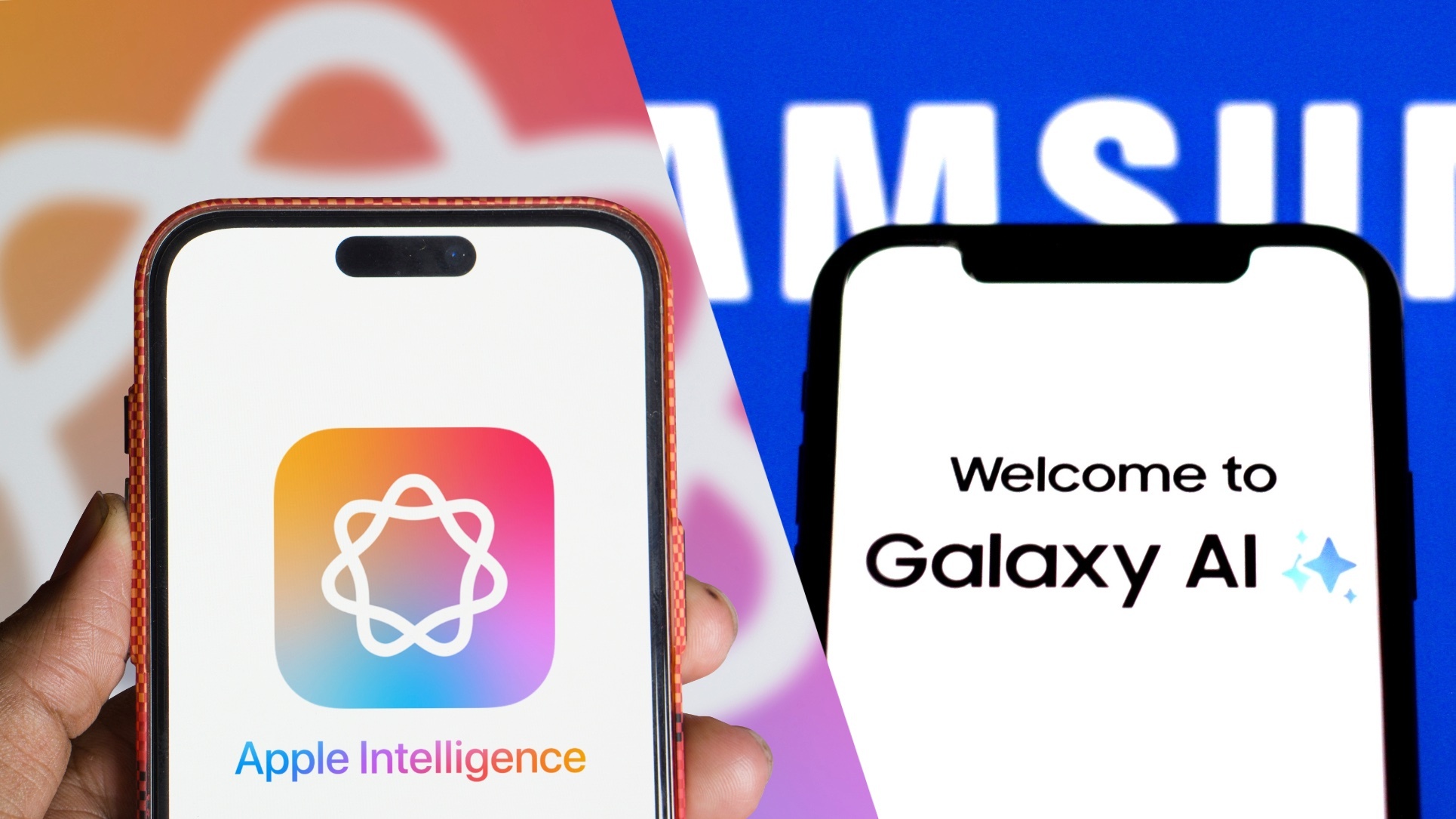
There's no guesswork required to figure out the biggest trend in smartphones this past year. Artificial intelligence led off and finished just about any conversation focused on the new phones that launched in 2024 — especially when it came to the latest models from the biggest smartphone makers.
The year began with Samsung announcing new Galaxy AI features as part of the Galaxy S24 launch and then quickly rolling out those AI-powered capabilities to other recent Samsung flagship phones. (Even the midrange Galaxy A35 features Circle to Search support, making it one of the few sub-$400 phones to offer at least some AI capabilities.) By the end of the year, Apple had gotten into the act, finally rolling out a suite of AI tools of its own. And we're not done with the Apple Intelligence launch, either, as future iOS 18 updates figure to bring other promised improvements to the latest iPhones.
Then there's the Google Pixel phones, long established as the leaders when it comes to AI features. That lead was only cemented by the August release of the Pixel 9 lineup, as the new Tensor G4 silicon powering those phones introduced additional AI capabilities to the mix.
So yes, smartphones gained plenty of AI superpowers in 2024? But how many of those powers were actually super.
I'm a bit of an AI skeptic when it comes to new features, more inclined to the "Nobody asked for this" stance than to believe that an AI feature is a big step forward. I see the value in AI on the phone — anything that takes care of repetitive tasks or fits into my current workflow gets a thumb's up. Anything that comes across a glorified parlor trick with more sizzle than steak, I can do without.
Among the AI features introduced to phones this past year, a fair amount wound up impressing me — more than I would have guessed when I started jotting down the AI improvements I liked. But there are certainly a few that need to go back to the drawing board... or maybe not even be on my phone at all. Here's one person's take on the AI features that made the grade in 2024 and the ones that failed to impress.
My favorite AI phone features
Mail summary tools on the iPhone
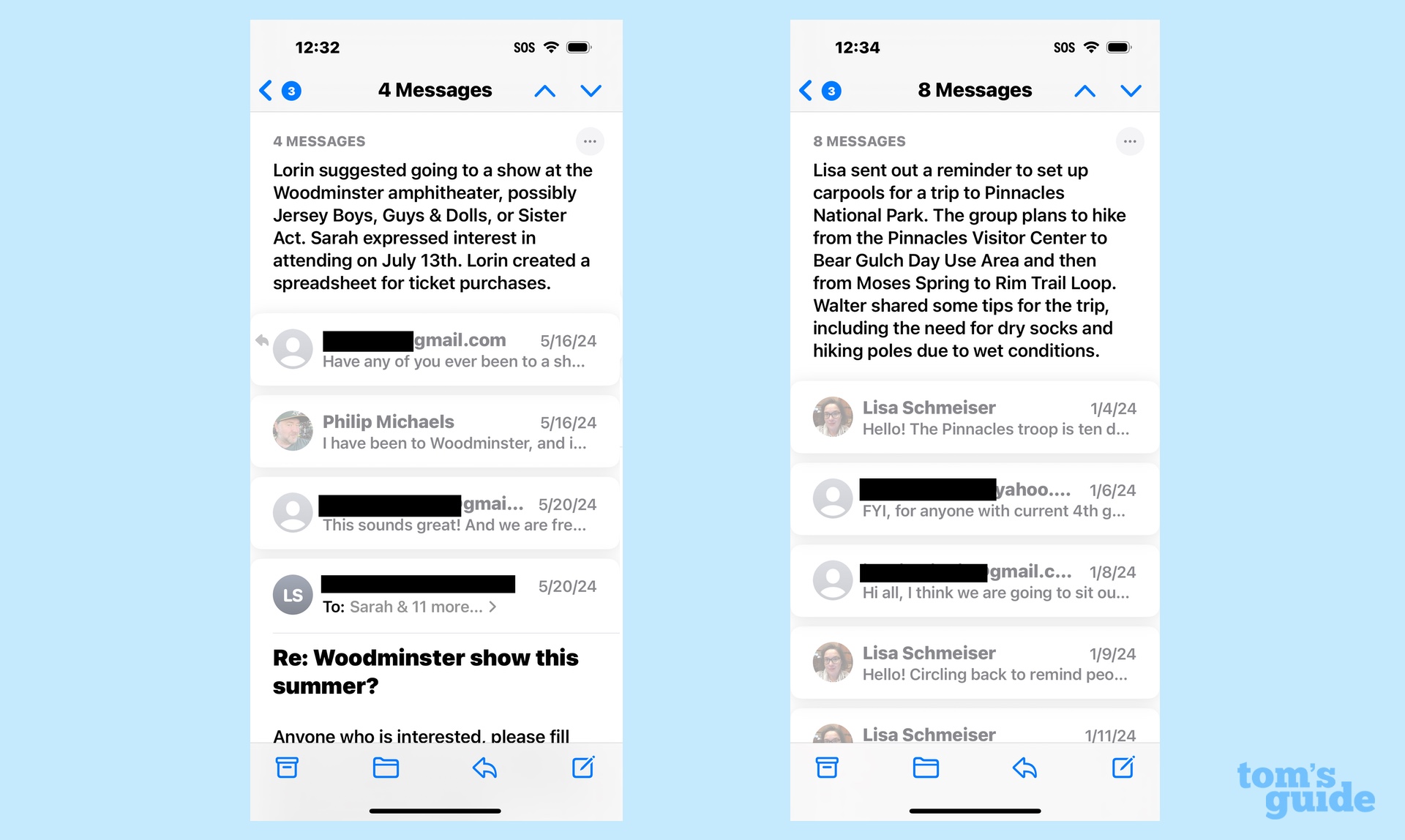
I find myself on a lot of email chains involving friends, school parents and different organizations, and I'll be honest — a lot of times I don't have the time to read each message as it comes in. Or even worse, I'll have to refer back to a long string of emails and track down the exact one that has the pertinent information, which can be like finding a needle in a haystack when there's a lot of back and forth to sort through.
That's the way things were before Apple Intelligence arrived, though. Now, the built-in Mail app has a summary tool at the top of each message. Tap it, and you can get a recap of the key points in any email or string of messages. Even better, the summaries are pretty accurate, so I can be sure that I'm getting the gist of what I need to know.
Circle to Search

This search aid developed by Samsung and Google made its debut on the Galaxy S24, but it's since fanned out to other Android phones. All you have to do is long press the home button and then circle or tap the thing you want to search (usually an image, but you can select text, too). You'll then get results in a pop-up window — handy, because you can stay in the app you're already in, without having to retrace your steps when your search is complete.
When Circle to Search debuted, I worried that it would be a glorified way to push you to e-commerce sites — and indeed, the tool is very helpful if you see something you'd like to buy and tracking down where you can buy it. But over the year, Circle to Search has grown into a great tool for looking up things on the fly without having to stop and jump to another app. Online search may be degraded these days, but Circle to Search really helps cut through the cruft to find the information you wanted.
Pixel Screenshots
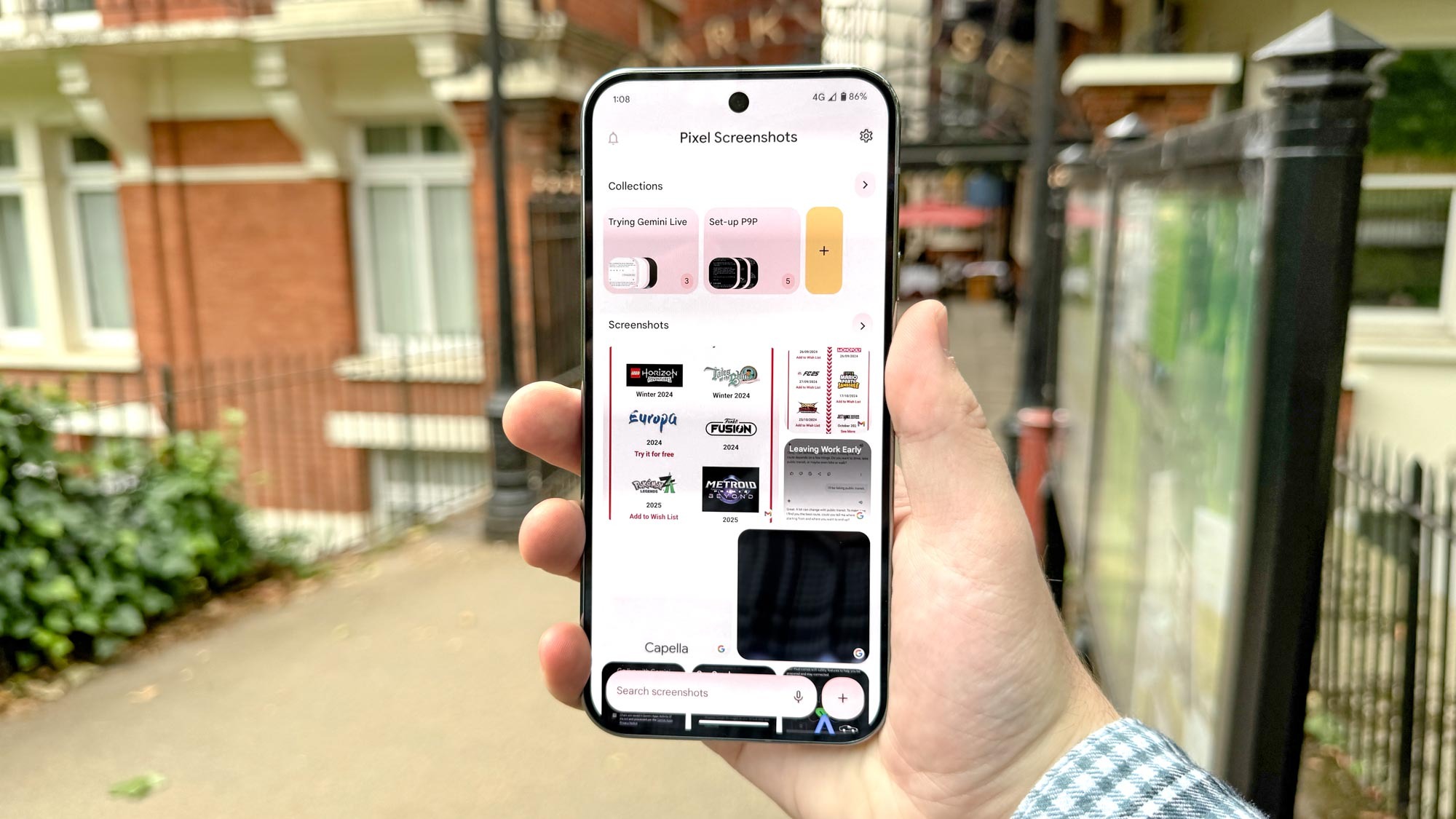
If you're like me and you take a lot of screenshots on your phone to remember things, the addition of the Screenshots app with the Pixel 9 update has been a welcome addition to Google's phones. Yes, the app is a one-stop repository for all the screen-grabs you capture on your phone, but it wouldn't be that impressive if that's all Screenshots did. You can also search for text within the screenshot, and the AI on board the Pixel is smart enough to find exactly what you're looking for.
Screenshots has other management tools that make it a wonderful addition to Google's phones. You can annotate screenshots, sort them into collections and easily share screenshots with other people. But the best feature is to set a reminder about a particular screenshot so that it surfaces at a particular time. When I'm going to an event, for example, I can set a reminder for a screenshot with the registration details, rather than have to search through my inbox for the exact email that has that same information. Screenshots can be a real time-saver, as it fits exactly into how I store information for later reference.
Interpreter app
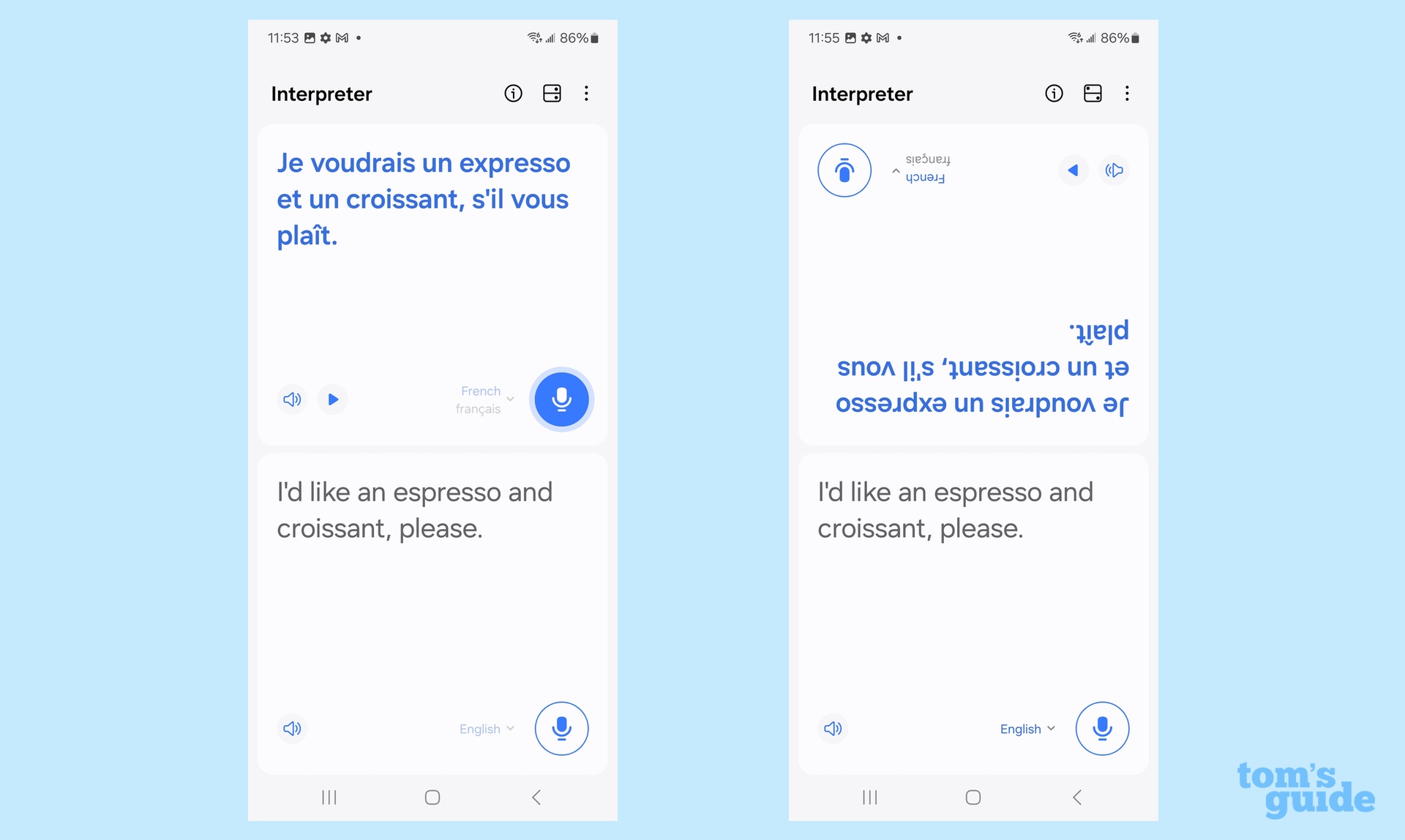
Lots of mobile phones offer translation features, but Samsung's Galaxy AI has arguably the best implementation of it with live translation through the Interpreter app. If you do a lot of traveling, this is an essential tool to have at end, especially since you can download different languages on to your Galaxy phone so that the feature works without requiring a network connection.
Once you've selected your languages and started a conversation, your Galaxy device will listen to what you're saying, then repeat an audible translation that it also displays on your phone's screen. If you want, you can make the transcript of the translation appear upside down on the phone so that both you and the person you're speaking with can see real-time translations without having to hand the phone back and forth.
Galaxy AI also supports a Live Translate feature for phone calls that provides on-the-fly translations when you're talking on the phone with someone who speaks another language. This tool doesn't work quite as seamlessly — there's a lot pauses as you wait to hear the translated speech, and it seems to work best if you speak less casually. But it's still an impressive display of on-device AI working to extend what you can do with your phone.
Call Notes
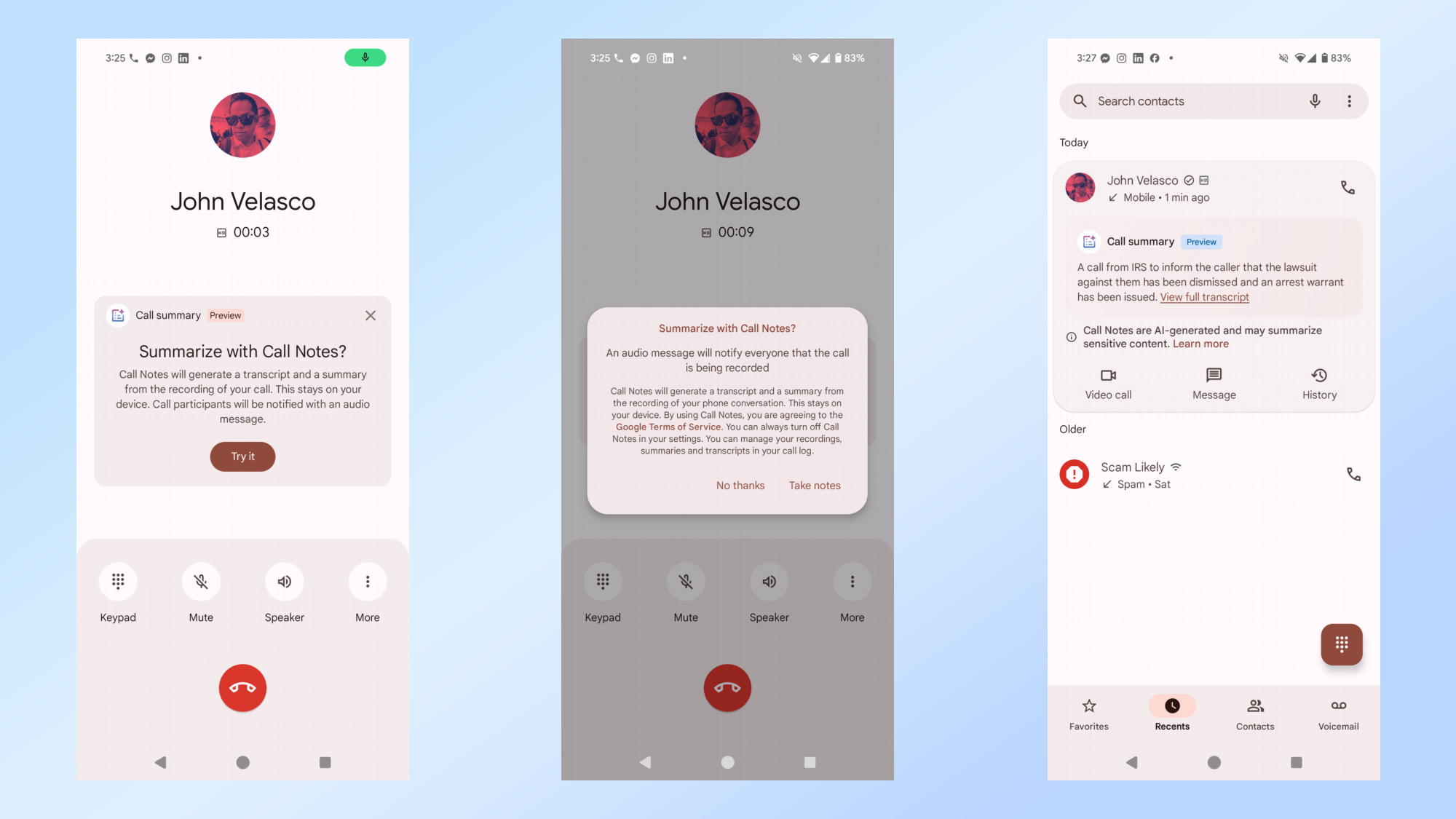
Call recording is now a feature on the Phone app of every major flagship device. (At least it will be on Samsung's Galaxy flagships once One UI 7 gets released to more phones.) And where there's call recording, there's usually AI-generated transcripts of phone calls to go with those audio files. If that's a feature that's important to you, you won't find a better implementation than Call Notes on Google's latest Pixel phones.
What I appreciate about Call Notes is its summary feature. (iPhones have a summary tool for phone call transcripts, too, though only on devices that support Apple Intelligence.) With the tap of a button, the AI on board your Pixel can highlight the key points of a phone call, saving you the trouble of having to dig through the transcript yourself.
When I tested Call Notes for a Pixel 9 Pro review, I found the transcript prone to misheard words, which is not an uncommon problem with transcription features on mobile devices these days. But the summary tool is accurate enough that I'm confident the quality of Call Notes transcripts will improve over time.
AI-powered photo editing features
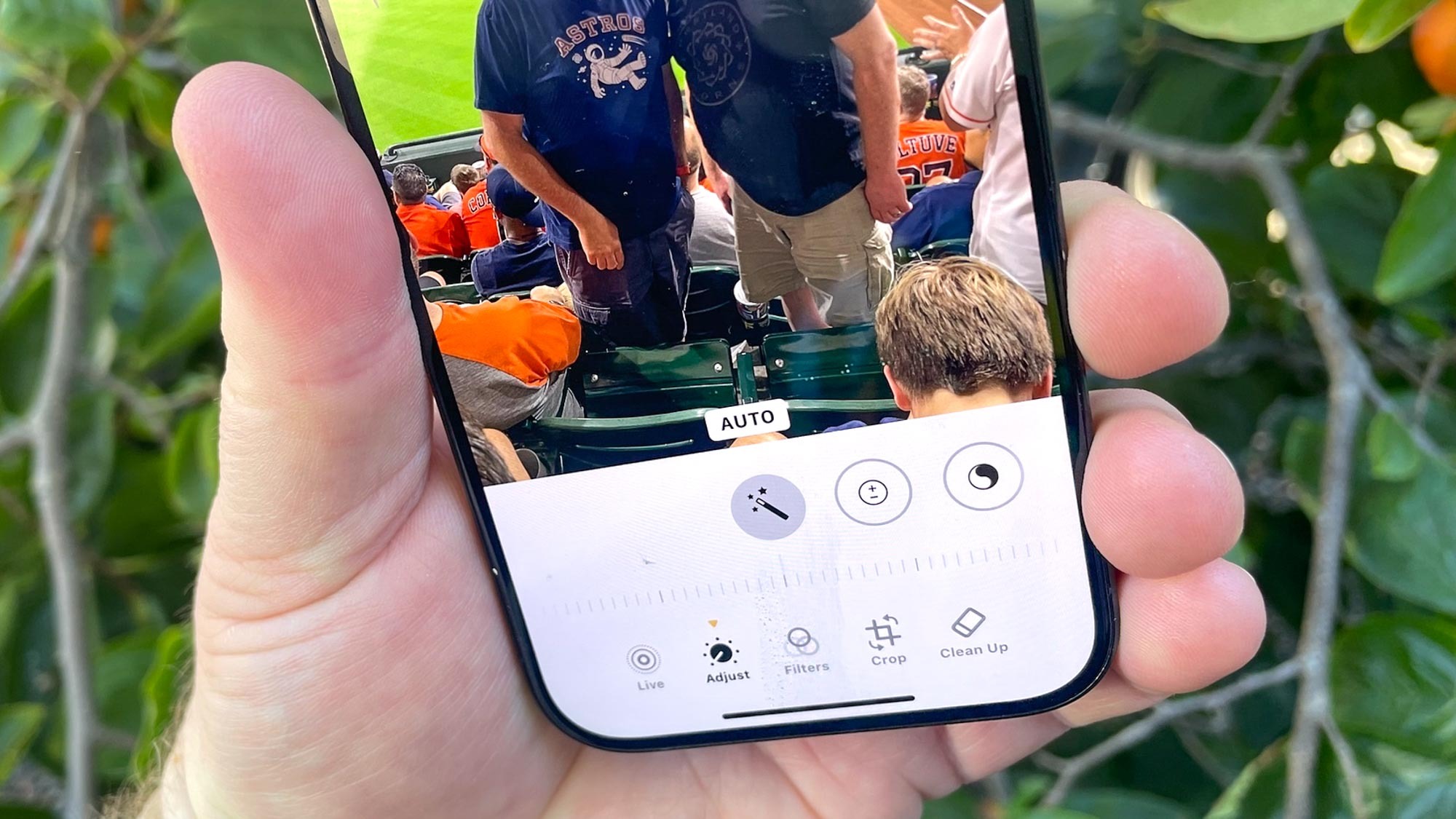
Perhaps the most welcome addition brought by AI to any phone are beefed-up photo editing tools that take some of the more challenging touch-up work out of your hands. I don't know about you, but I'm not a trained photo editor, and I don't want to have to learn the finer points of an image-editing app just to take care of some glare in a shot or to make the colors pop a little bit more.
You'll find a cool image-editing capabilities in any of the best camera phones that came out in 2024. (You'll also find a couple duds, which we'll talk about in a bit.) All iPhone 16 models now offer a Clean Up tool in the Photos app that does a solid job of removing unwanted objects or people from a photo. Yes, that's a feature Android phones have long had, but it's nice to finally see it on at least some iPhones. I also appreciate the edit suggestion feature that the Galaxy S24 introduced. Again, I'm not an expert at image editing, so when I see something like a distracting shadow, it's nice to turn to an AI tool if I need to remove a shadow or add a background blur.


Google has been adding tools like this to its Pixel phones for several generations now in the form of things like Magic Editor and Best Take. And because those features have been such a hitter, it's harder and harder for newcomers to make a similar splash. Still, the addition of Reimagine to Magic Editor expands that feature's toolkit in a helpful way, giving you the ability to use descriptive text to direct AI to make tweaks and improvements to your images. AI is still doing the heavy lifting, but ultimately control over the look of your images is still in your hands.
Instant Slow-Mo

While we're talking about image-editing tools, let's carve out a special space for my favorite addition — the Instant Slow-Mo capability that debuted with the Galaxy S24 series. Part of the dilemma I face as an amateur photographer is knowing when to plan for an effect ahead of time — in this case, knowing when I should be shooting slow-motion video instead of capturing video at its standard frame-rate. The Instant Slow-Mo feature takes that guesswork out of my hands.
Now I can go into the Gallery app on a Samsung flagship phone and tap and hold on the part of a selected video that I want to slow down, lifting my finger when I want to speed things back up. Adjusting the speed of the effect is easy, and I can even fine tune when the slow motion kicks in. More importantly, I can capture footage spontaneously without having to think about what I need to do in post, as the AI powers of Instant Slow-Mo fill in the missing frames to complete the slow-motion effect.
Sketch to Image


Samsung clearly had the best year in terms of AI features, and it didn't stop with the Galaxy S24's arrival way back in January. The Galaxy Z Fold 6 and Galaxy Z Flip 6 introduced us to Sketch to Image, which takes drawings you make in different apps and uses generative AI to convert them into realistic illustrations.
Sketch to Image works best when you've got a modicum of talent and an S Pen-compatible phone, but the feature also supports primitive sketches you make with your finger. Best of all, Samsung extended this capability to the Galaxy S24, Galaxy S23 and Galaxy S22 as well as some older foldables, as Samsung has been pretty generous when it comes to delivering new AI capabilities to existing models.
AI phone features that missed the mark
Writing Tools on the iPhone
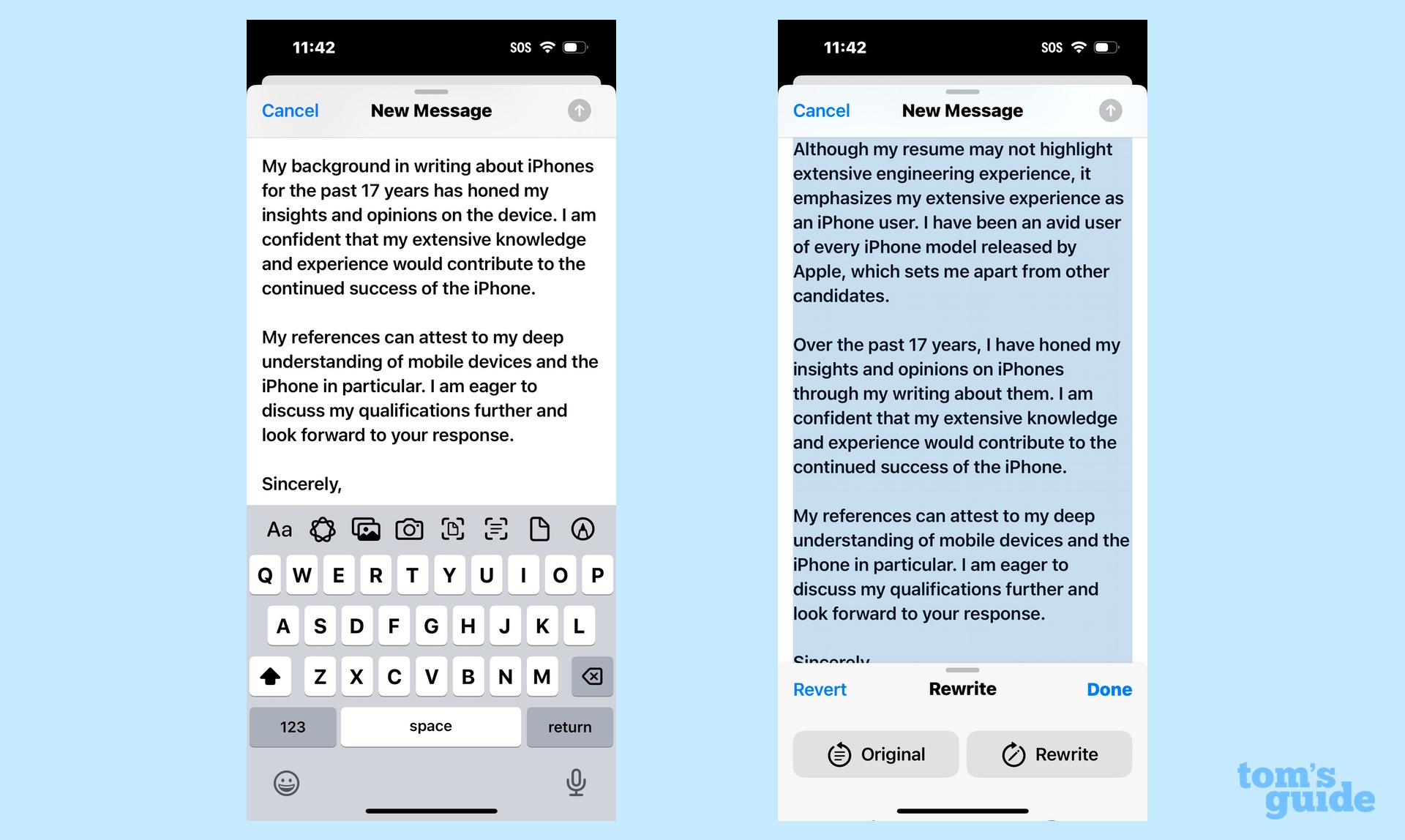
I read a wag on Bluesky dismissing smartphone AI features as glorified spellcheck, and while I think that's a bit harsh in some cases, it's uncomfortably close to the mark for the Writing Tools introduced via Apple Intelligence. Writing Tools are supposed to improve your writing with shortcuts for changing tone as well as commands that check... well... spelling and grammar. And they fill that brief in the broadest possible sense, though not always in a way that flatters your writing.
Let's give some credit where credit is due. If you're composing a business letter, the Professional preset in Writing Tools is familiar enough with formatting and style of this very structured form of writing to convert your draft into a competently crafted text. The Describe Your Change feature added in the iOS 18.2 update also gives you more ontrol over the changes in tone that Writing Tools will impose on your writing — not a bad development in the greater scheme of things and a sign of how Apple can improve tools even after they're released.
But other Writing Tools presets are content to replace a few words with synonyms and strip out any type of personal voice from your writing. The end effect is usually text that doesn't read like a human being composed it — and that's the opposite impression you should want to make in an email or a report.
Genmoji
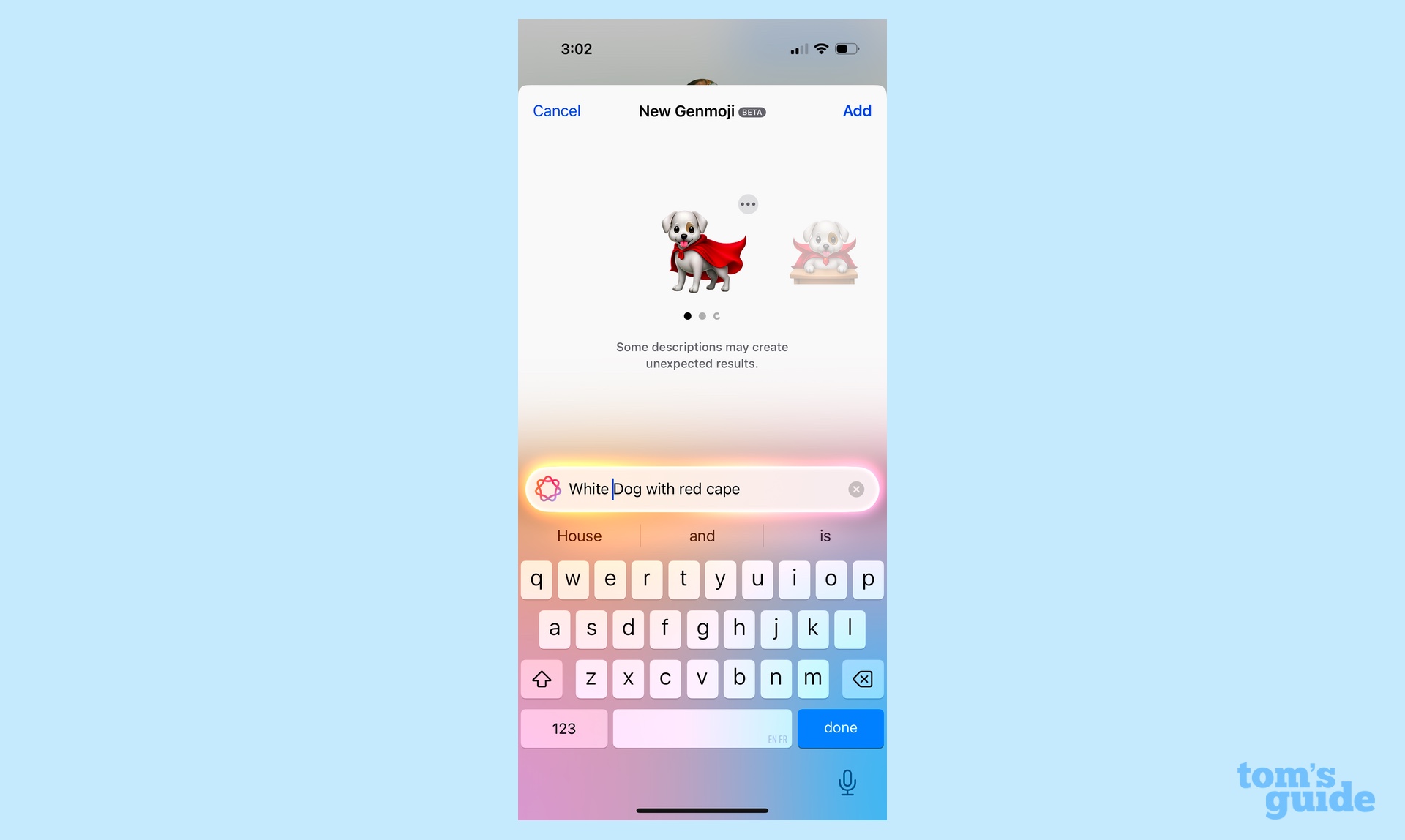
While we're throwing shade Apple's way, let's save some raspberries for Genmoji, the tool that creates customized emoji based on text descriptions that you offer. The feature does what it says in the description: you can indeed tell Apple Intelligence to whip you up an emoji of a fox dressed as an astronaut or a friend of yours clutching a dollar bill. But — and I think this is a question we need to ask of any AI feature — to what purpose?
I say this as someone who has little use for emoji: a picture may be worth a thousand words, but words are still pretty useful when it comes to communicating with other people. But I have a hard enough time deciphering teeny-tiny emoji in text messages that care commonly used. I've now got to figure out what someone messaging me means when they send me a mushroom wearing a top hat? Let's file this one under AI party tricks and spend our time on more edifying AI capabilities, please.
Image Playground/Pixel Studio
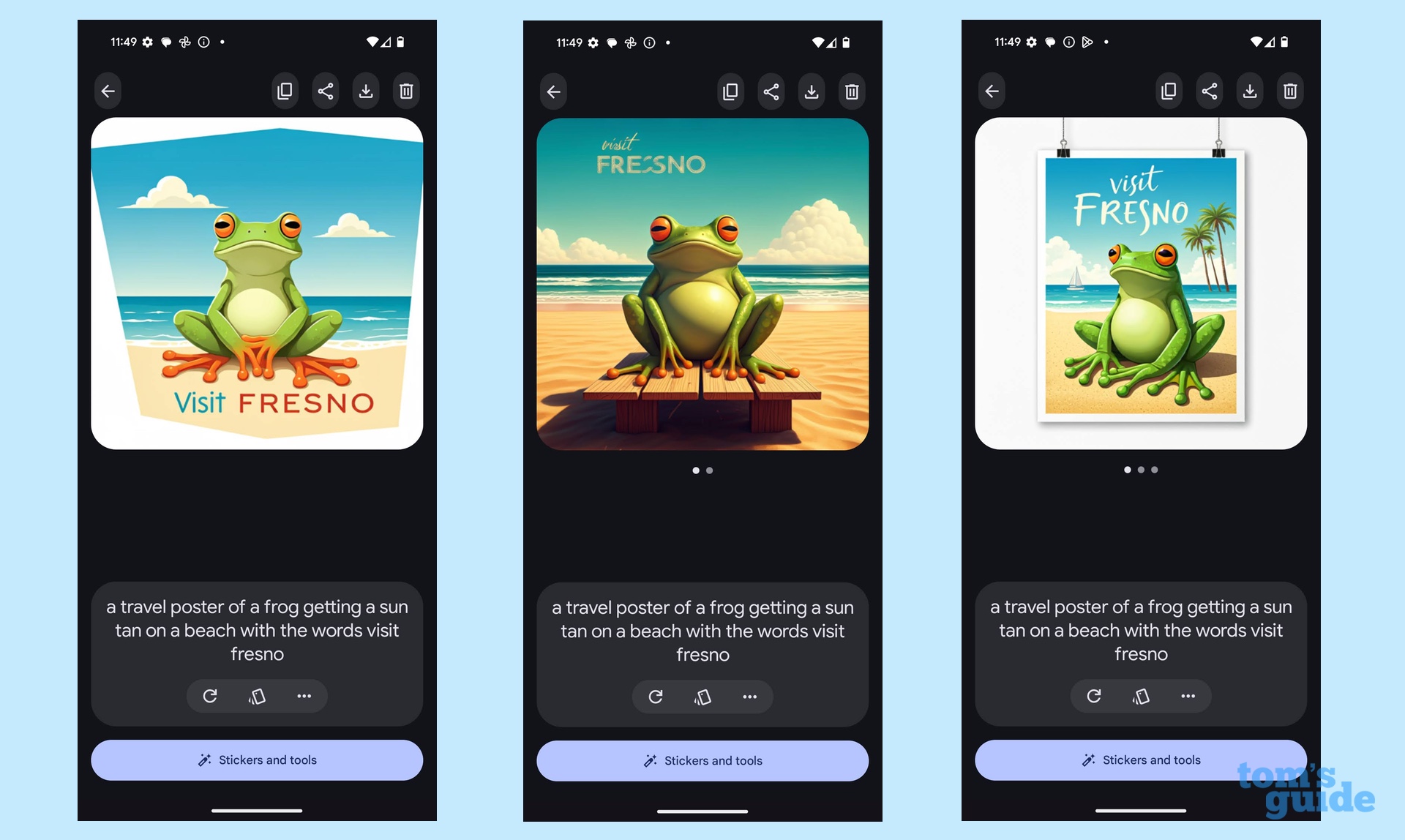
While we're on the subject of tools that show off the power of generative AI but serve little practical purpose, let's talk generative image creation — features like Image Playground on the iPhone or Pixel Studio on the Pixel 9. With these capabilities, you can use text prompts to create an image that matches your description.
On paper, that's an intriguing capability, and the results from either Image Playground or Pixel Studio impress up to a point. But the limitations are so severe — Apple's Image Playground only supports two different styles at the moment, for example and the final product so similar, that apart from texting your output to friends, you likely won't have much use for the images. I used Pixel Studio a lot leading up to my Pixel 9 Pro review, and since then, I've not even touched the feature. That's not really an argument in favor of how essential generative image creation tools can be on the phone.
Chat Assist
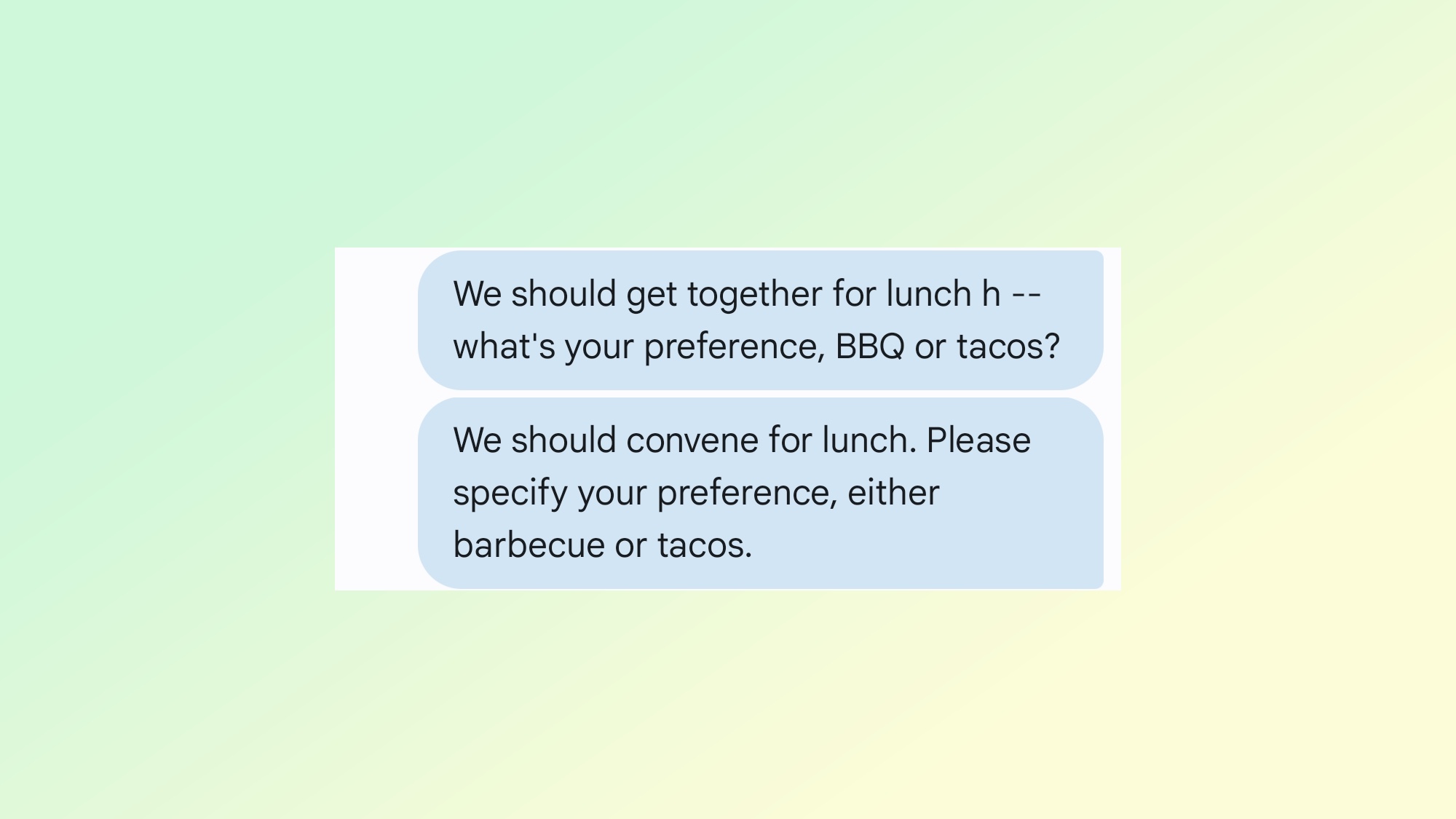
It's only fair that we spend some time on Galaxy AI's lesser capabilities, and for me, that's Chat Assist. Like Writing Tools on the iPhone, Chat Assist looks to fine-tune the tone of any text messages you send — making texts to co-workers sound a little more professional and texts to friends and family a little less stiff. The end result is usually texts so unnatural, your friends and family will wonder if they're being texted by your captor.
I took Chat Assist out for a spin earlier this year to see if messages tweaked by Chat Assist came across as ones that I would have composed on my own. A few AI-crafted messages slipped by my test subjects, but they were mostly formal ones or ones sent to people who knew me casually. Close friends and family will spot Chat Assist-tweaked texts the moment you press send, so don't even bother using this feature for the most common form of messaging. And that makes me wonder why it's even included with Galaxy AI at all.
Add Me


As adept as Google is at adding AI-powered tools to its phones, it's due a few turkeys of its own, and this year's Add Me addition really didn't measure up to past Google updates. If you've forgotten Add me allows you to join the group shots you've taken by letting you hand off the camera to someone else and using AI to dictate where you should stand. Add Me then takes the two shots — the one with you, and the one with out — and combines them into one seamless photo.
It's a solid idea, but the output isn't always as seamless as it should be, at least not when I've tried to use Add Me. The trouble lies with handing off the camera to someone else. Unless they angle the phone in the exact same way and at the exact same height, I've found my results tend to be off — in one photo with some family members, I ended up looking like an oversized giant dropping in on a collection of hobbits.
Maybe Add Me works more seamlessly the more familiar you get with the feature and the more you're able to account for any quirks in how different people frame the same shot. But the results I've seen are too erratic for me to trust Add Me.
AI features that need more work
Digital assistants
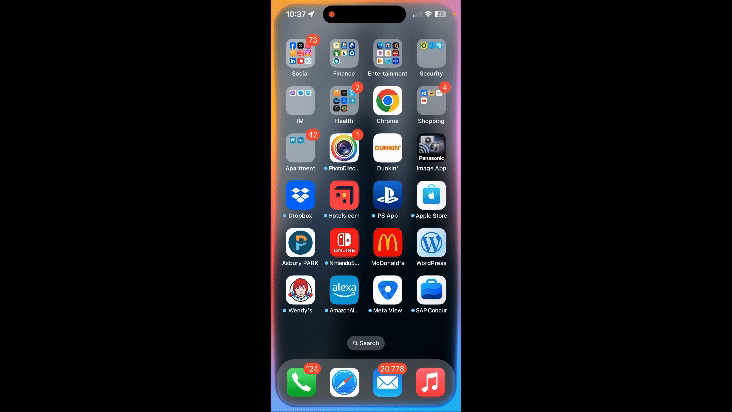
Some AI additions to phones are neither good nor bad — they're just incomplete. That's how I feel about the AI enhancements to the digital assistants on board most major flagships, as there have been some strong improvements in the past year with the more significant additions yet to come.
Google's digital assistant, now replaced by Gemini Live, is probably the furthest along as it's incorporated Google's AI chatbot to a strong overall effect. The change has made the Pixel's on-board assistant easier to talk to and more capable when it comes to understanding the context of your questions. And if you've bought one of the three Pixel 9 Pro models, you also get a year of Gemini Advanced and its more complex features at your disposal.
Siri is getting an Apple Intelligence revamp, too, and so far that's meant a new design — the face of your iPhone flashes when Siri is listening — plus integration with ChatGPT, if you opt in to that. Siri supports more natural language, but the real improvement will come when the assistant understands and acts upon whatever happens to be on your screen — a feature that we're expecting to in the coming months. Samsung is promising much the same thing with its One UI 7 update, which is in beta now ahead of its launch alongside the Galaxy S25. That's likely to occur later this month.
A context-aware assistant is the key for many smartphones, so we'll be better able to assess who's got the smartest assistant once that crucial piece is in place.







